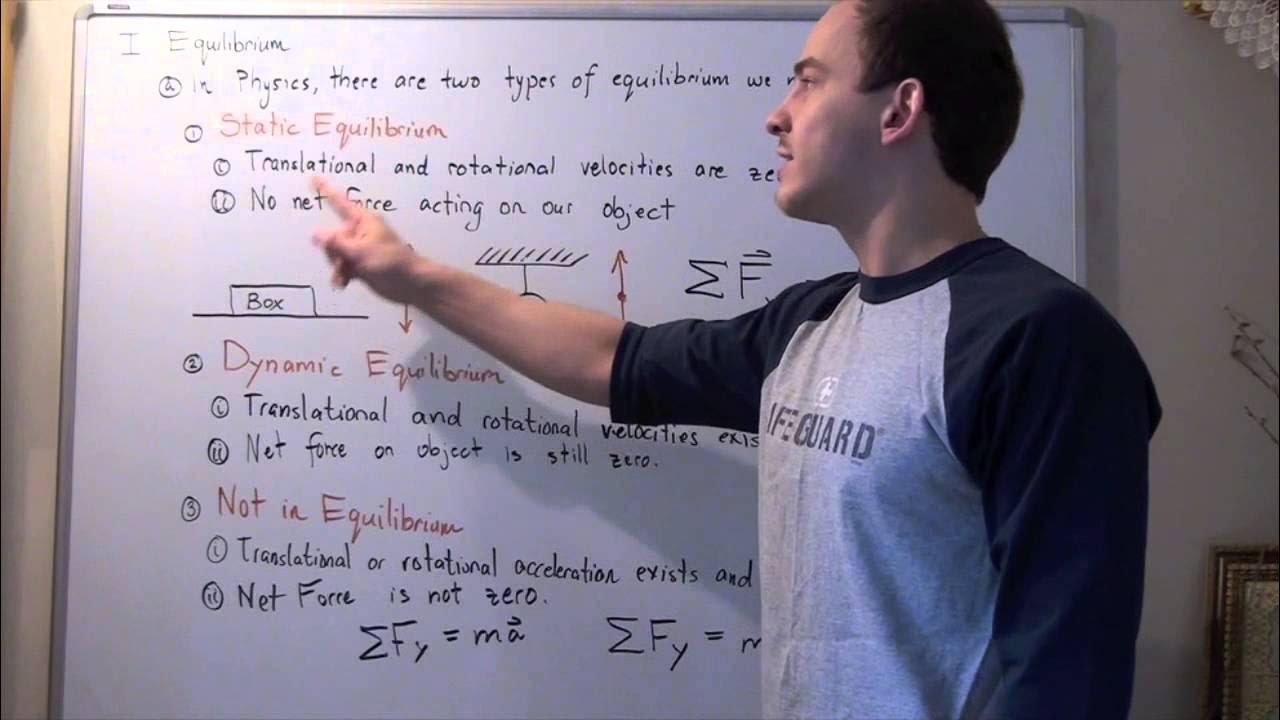GCSE Physics - Terminal Velocity #55
TLDRThis video delves into the concept of terminal velocity, explaining how falling objects reach a constant speed due to the balance between gravitational force and air resistance. It illustrates the process from the initial acceleration towards the ground to the point where air resistance equals the force of gravity, resulting in a steady descent. The video also discusses the impact of deploying a parachute, which increases air resistance and reduces terminal velocity, leading to a slower descent.
Takeaways
- 📉 When a person jumps from an airplane, gravity pulls them downward, causing a force known as weight.
- 🚀 Initially, the only force acting on the falling person is their weight, resulting in downward acceleration.
- 💨 As the person falls, they encounter air resistance, an upward force that opposes the downward force of gravity.
- 🔄 The magnitude of air resistance depends on the person's surface area and velocity, increasing as the person falls faster.
- ⚖️ The resultant force on the person is the sum of their weight and air resistance, initially favoring gravity but decreasing as air resistance increases.
- 📊 A velocity-time graph illustrates the decreasing rate of acceleration as air resistance increases and approaches the force of gravity.
- 🏁 At terminal velocity, air resistance equals the force of gravity, resulting in zero net force and a constant, unchanging velocity.
- 🪂 Opening a parachute significantly increases surface area and air resistance, causing an upward resultant force and deceleration.
- 🔄 With the parachute, the person will reach a new, lower terminal velocity as air resistance balances out the weight once again.
- 📌 Terminal velocity is the constant speed that a falling object maintains when the resistance of air equals the force of gravity acting on it.
Q & A
What is terminal velocity?
-Terminal velocity is the constant velocity that a falling object reaches when the air resistance acting upwards equals the gravitational force acting downwards, resulting in no further acceleration or deceleration of the object.
Why do objects accelerate when they first fall from rest?
-Objects accelerate when they first fall from rest because the only force acting on them is their weight, which pulls them downwards due to gravity. Since there is no opposing force at the beginning, the object experiences a net force causing it to accelerate towards the ground.
What factors affect the air resistance experienced by a falling object?
-The air resistance experienced by a falling object depends on two main factors: the surface area of the object and the velocity at which the object is moving. A larger surface area leads to more collisions with air particles, and a higher velocity means more frequent collisions, both of which increase air resistance.
How does the rate of acceleration change as a falling object increases its velocity?
-As a falling object increases its velocity, the air resistance acting against its weight increases. This means that the resultant force causing the object to accelerate downwards decreases. Consequently, the rate of acceleration decreases over time until it reaches zero when the object's air resistance balances out its weight, at which point the object has reached its terminal velocity.
What happens to an object's terminal velocity when it opens a parachute?
-When a parachute is opened, the object's surface area increases significantly, leading to a substantial increase in air resistance. This increased air resistance opposes the weight of the object, causing the resultant force to act upwards and the object to decelerate. The object will eventually reach a new, lower terminal velocity with the parachute open.
How does the shape and size of an object influence its terminal velocity?
-The shape and size of an object influence its terminal velocity by affecting the amount of air resistance it encounters. An object with a larger surface area or a shape that increases drag will experience greater air resistance, which can lead to a lower terminal velocity compared to an object with less surface area or a more streamlined shape.
What is the relationship between air resistance and the number of collisions with air particles?
-The air resistance is directly proportional to the number of collisions with air particles. As an object falls and collides with more air particles due to increased velocity, the air resistance it experiences increases. This increase in air resistance acts to slow down the object until it reaches its terminal velocity.
How can a velocity-time graph help in understanding terminal velocity?
-A velocity-time graph can illustrate the changes in an object's velocity over time. Initially, the graph is steep, indicating a high rate of acceleration. As the object's velocity increases and air resistance becomes significant, the graph becomes less steep, showing a decreasing rate of acceleration. When the object reaches terminal velocity, the graph becomes horizontal, indicating that the velocity is constant and there is no further acceleration or deceleration.
What would happen if an object's weight suddenly changed while it was falling?
-If an object's weight were to suddenly change while it was falling, it would affect the balance of forces acting on the object. If the weight increased, the object would accelerate more, potentially reaching a higher terminal velocity. If the weight decreased, the object would decelerate, reaching a lower terminal velocity or even starting to ascend if the weight became negative (which is not physically possible for objects with mass).
How does the terminal velocity concept apply to real-world scenarios like skydiving?
-In skydiving, the terminal velocity concept is crucial. Initially, when a skydiver jumps from an aircraft, they fall and reach a certain terminal velocity based on their body shape and size. When the parachute is deployed, the skydiver's surface area increases dramatically, which increases air resistance and decreases their terminal velocity, allowing for a slower, controlled descent to the ground.
What is the significance of understanding terminal velocity in engineering and physics?
-Understanding terminal velocity is significant in engineering and physics as it helps in predicting and calculating the motion of objects under gravity and air resistance. This knowledge is essential in various applications, including the design of parachutes, the analysis of atmospheric re-entry of spacecraft, and the study of the motion of falling objects in weather and environmental studies.
Outlines
🌐 Introduction to Terminal Velocity
This paragraph introduces the concept of terminal velocity, explaining why falling objects reach a constant velocity where they no longer accelerate or decelerate. It sets the stage for the discussion by imagining the scenario of a person stepping out of an airplane. The paragraph emphasizes the role of gravity and weight, and introduces air resistance as an opposing force that slows down the falling object. It outlines the factors affecting air resistance, such as the surface area of the falling object and its velocity. The resultant force, a combination of weight and air resistance, is described as the driving factor for the object's acceleration, which changes as the object falls and encounters more air resistance.
🪂 The Effect of Parachute Deployment on Terminal Velocity
The second paragraph delves into the effects of deploying a parachute on an object's terminal velocity. It explains that opening a parachute significantly increases the surface area of the falling object, thereby increasing air resistance. This increased air resistance leads to an upward resultant force, causing the object to decelerate or accelerate upwards, effectively slowing down the descent. The paragraph describes how the new terminal velocity, achieved with the parachute open, is lower than the initial terminal velocity without it. It concludes with a brief recap of the key points discussed in the video, providing a clear understanding of the dynamics of terminal velocity and the role of air resistance and parachute deployment in altering it.
Mindmap
Keywords
💡Terminal Velocity
💡Gravity
💡Air Resistance
💡Weight
💡Acceleration
💡Surface Area
💡Velocity
💡Resultant Force
💡Parachute
💡Collisions
💡Deceleration
Highlights
Exploration of terminal velocity and the forces at play when objects fall.
Explanation of why falling objects eventually stop accelerating and maintain a constant speed.
Discussion on the role of gravity and mass in the falling process.
Introduction to air resistance as an opposing force to gravity.
How air resistance depends on the surface area of the falling object.
The impact of velocity on the amount of air resistance experienced.
Visual representation of the forces through a velocity time graph.
The point at which air resistance equals weight, leading to terminal velocity.
Explanation of how a parachute changes the terminal velocity by increasing surface area.
The resultant force becoming upwards when a parachute is deployed.
Description of the deceleration process when falling with an open parachute.
How the new terminal velocity with a parachute is lower than without it.
Recap of the concept of terminal velocity and the forces involved.
The importance of understanding terminal velocity for practical applications.
Engagement with the audience through a like and subscribe call to action.
Transcripts
5.0 / 5 (0 votes)
Thanks for rating:





